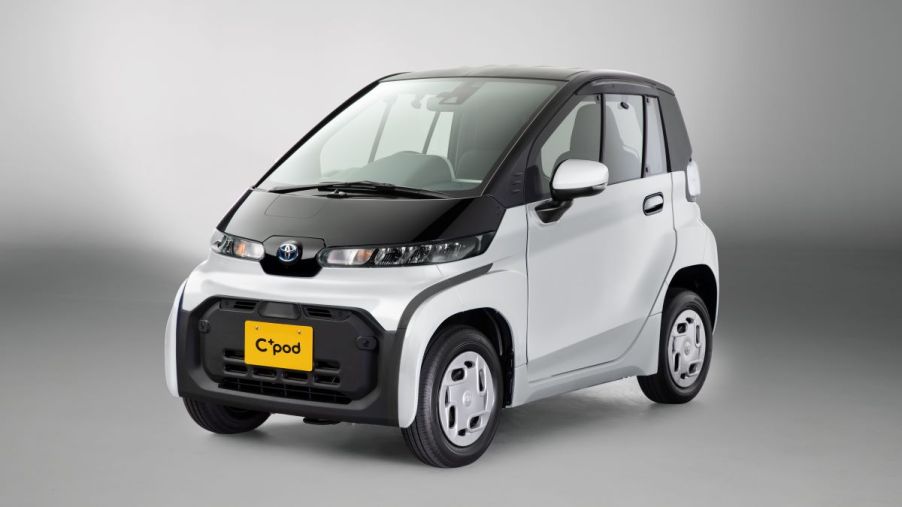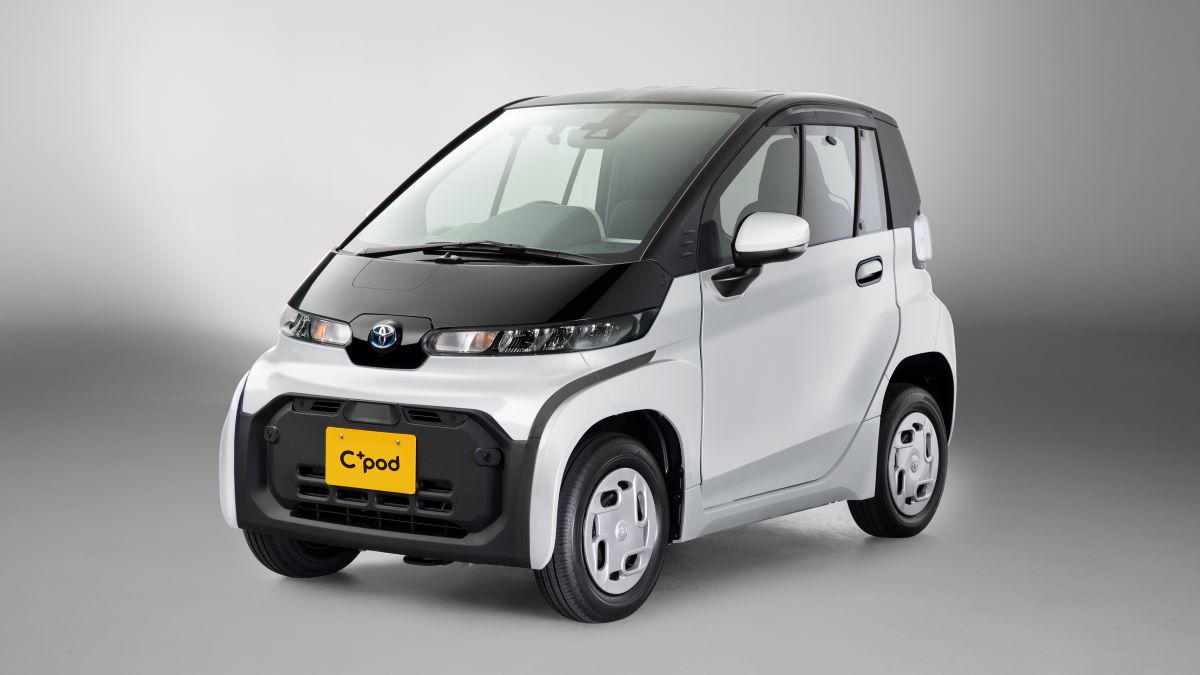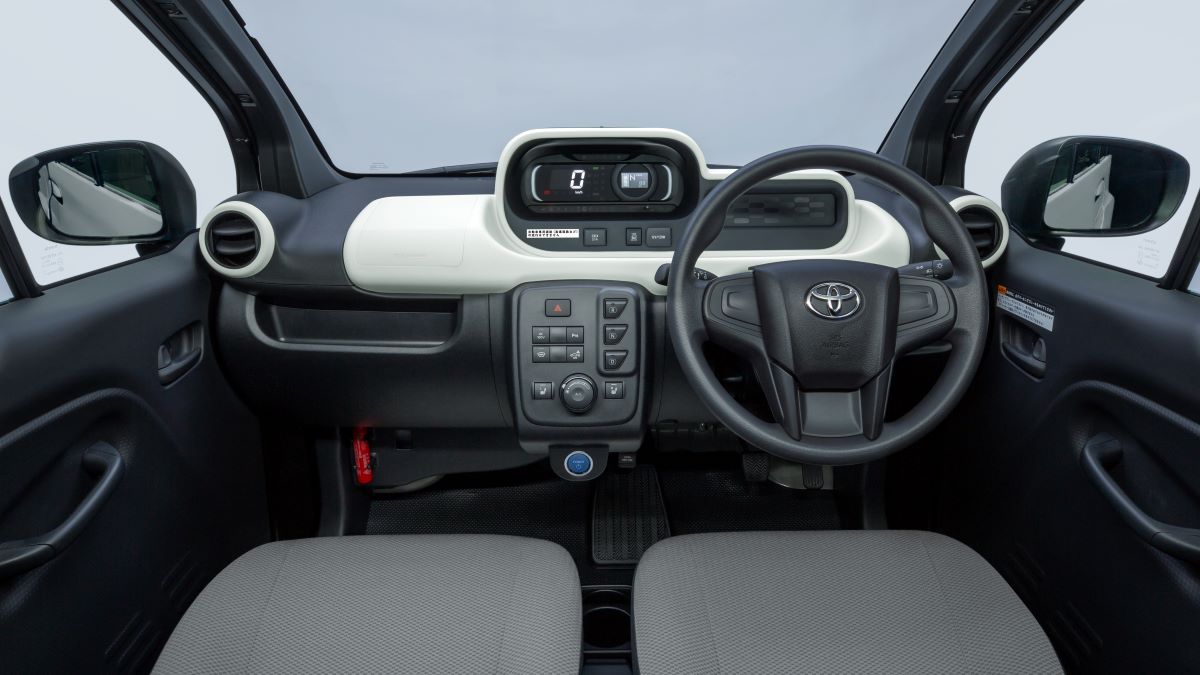
The Smallest Toyota EV Is 1 You Can’t Get Your Hands On
Toyota’s homeland of Japan is packed with interesting vehicle offerings that never make it beyond its domestic borders. More than a dozen Toyota EVs are set to fulfill electrification desires in America, but not every model they make is sold here, or anywhere else for that matter. For instance, the smallest Toyota EV you aren’t allowed to buy.
What is the smallest Toyota EV?

Despite being named like a compact washing machine, the C+pod is the smallest Toyota EV. As an environmentally-friendly two-seater BEV (battery-electric vehicle), it serves as a pint-size solution to fuel-thirsty fleet vehicles. Although it’s no typical Kei car—it’s even smaller.
| Kei car (max size) | Toyota C+pod | |
| Length | 11.2 ft | 8.17 ft |
| Height | 6.6 ft | 5.08 ft |
| Width | 4.9 ft | 4.23 ft |
The smallest Toyota EV is designed less as a car and more as a mobility option. Considering the crowded nature of Japan’s sprawling metropolitan areas, it improves per-person energy efficiency, Toyota says. Moreover, it’s compliant as a “Walking-Area BEV,” which facilitates movement through pedestrian zones. This is particularly welcome for those who drive short distances, young and older drivers.
And don’t think the Toyota EV mini-vehicle isn’t safe. The C+pod features Toyota’s advanced safety systems, including collision avoidance and lane departure warning systems, ensuring a safe driving experience in urban environments.
C+pod performance specs
With its lithium-ion battery mounted low on the car’s spine, a lightweight body structure, and rear-wheel drive, it has the setup to handle well on the track. However, it’s almost as far away as one can get from a performance-inclined mode of transportation.
| Electric motor | Battery capacity | HP | Torque (lb-ft) | Range | Charge time | Top speed |
| 9.2 kW | 9.06 kWh | 12 | 41 | 93 mi | 5 hr. (200V) | 37 mph |
The C+pod isn’t for cruising outside urban areas, especially when a hummingbird or a goose can overtake it. The speed of different birds aside, with the Toyota EV’s quite attractive styling, it’s excellent for dragging Tokyo’s Takeshita Street.
The C+pod’s eccentric styling

It may not look like it from the outside, but the micro-BEV coupe can sit two people. Knees might touch with essentially no space between the seats, but luckily there’s no stick-shift.
Toyota’s C+pod offers a variety of color options and customizable features, allowing owners to personalize their vehicles to suit their preferences. Despite the monochromatic interior colors, everything from the dashboard to the events to the instrument panel features a rather enlightened, happy-go-lucky look. The only surface where the customer can choose the color is on the outside, with Black, Copper, Black with Copper, Cream, Electric Blue, and White available.
How does the Toyota EV stack up against its competitors?
You won’t find many microcars in the U.S. In fact, they don’t meet crash safety requirements. Across the world, however, they’re quite common. Two of the most popular are the Citroen Ami EV and the Smart EQ ForTwo.
| Electric motor (kW) | Battery capacity (kWh) | HP | Torque (lb-ft) | Range (mi) | Top speed (mph) | |
| Citroen Ami EV | 6 | 5.4 | 8 | 7 | 47 | 28 |
| Smart EQ ForTwo | 60 | 17.6 | 81 | 118 | 98 | 81 |
The C+pod has a smaller footprint than a Smart EQ ForTwo—7.9 inches shorter and 14.5 inches narrower. The Toyota EV is slightly longer than the Ami, but it has one inch less in height and it’s a whole five inches narrower.
How much is a Toyota C+pod?
When the Toyota C+pod debuted in Japan in late 2020, it was initially sold to “select corporate and municipal customers.” The following year, Toyota announced it would expand its sales target to all customers nationwide. There’s an unfortunate catch, though—the public can only lease them. Despite an MSRP of around a converted $16,000, it’s only offered exclusively through lease contracts from Toyota dealerships and rental or lease agencies in Japan.
While the smallest Toyota EV is relegated to Japan, the lease agreement is the biggest shudder for car enthusiasts who may not have been born yet. The C+pod would have been slated for legal import to the U.S. in 2045. But since they’re under lease, it’s unlikely to happen.


